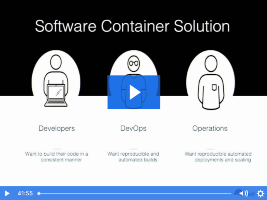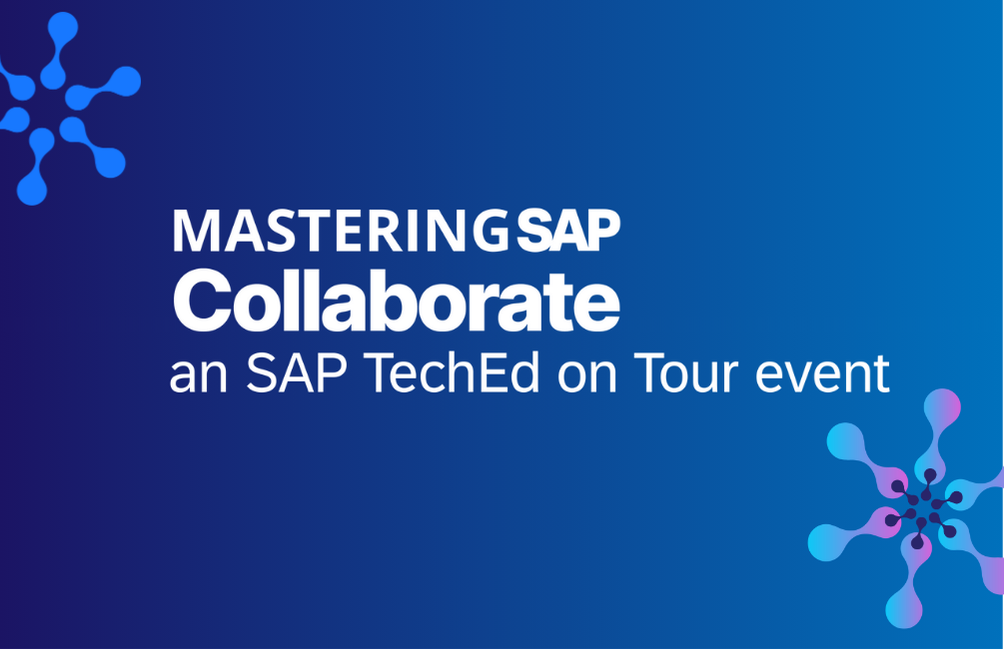Live from SAPinsider Studio: Red Hat and Support for the IoT Movement
Bob Mahoney, Red Hat IoT Business Development, joins SAPinsider Studio at the 2016 SAPinsider IoT conference to discuss how Red Hat supports the growing IoT movement and community. Topics of this discussion include fundamental use cases of middleware and a joint Red Hat and SAP platform that turns data into actionable intelligence.
This is an edited transcript of the discussion:
Ken Murphy, SAPinsider: Hi, this is Ken Murphy with SAPinsider, and I am at the SAPinsider IoT event in Las Vegas. This morning I’m pleased to be joined by Bob Mahoney of Red Hat, IoT Business Development Team. Bob, thanks for joining me.
Explore related questions
Bob Mahoney, Red Hat: Great to be here, Ken. Appreciate it.
Ken: I was hoping we could start if you could tell our viewers a little bit about Red Hat and what IoT means to Red Hat.
Bob: Red Hat is the founder of the open source movement. We started that movement about 10-12 years ago, and today we’ve grown to be about a $2 billion business. Most of the revenue comes from Red Hat Enterprise Linux offering, which is about a $1 billion business. Why people like the open source model, there are a couple of different reasons. First of all the innovation, the power of the community. It’s not just our R&D people creating new products, it’s the entire community. Our role in that community is to take their contributions to integrate it, to productize it, and support it. So therefore we’re offering a very reliable scalable, secure environment today. In IoT, security is very, very key. No IT director wants to have his network open and create another problem or back door where hackers can get into it. With our offering we are also able to complement our Red Hat Enterprise Linux with our JBOSS middleware product offering. If JBOSS was broken out to be a separate company, it by itself would be the second largest open source company. It’s a very large robust business, about 40% of our overall business today. Middleware is really important because it provides the plumbing for the IoT community which is really the fundamental value add that our customers have come to expect.
Ken: Can you tell me a little bit more about middleware and why it’s important in IoT?
Bob: There are three fundamental values that middleware provides. First of all it’s providing the plumbing; how do you connect an edge device to a gateway up to the datacenter? And how do you move that data in a consistent standards oriented environment so that it can be leveraged throughout the IoT environment and through the enterprise. So there are three fundamental use cases. First, accelerate, integrate, and automate. For accelerate, what we’re talking about is time to market; how fast, because you’re using standard based components, can you build a proof of concept, a pilot, or roll out a scalable architecture that can grow to the 26 billion devices that Gartner is projecting that will be connected over the next five years. To address that opportunity is going to require a lot of scalability.
The other thing that we do is integrate, so how do you get the data from an edge device, a PLC, or sensor, or human, and bring it up to the enterprise? So first of all our JBOSS A-MQ messaging platform provides a means to communicate from the edge device up to the gateway or to the datacenter. Our JBOSS Fuse product will take that data, transform it into a standard format, and allow you to integrate it with other applications, so we have a built-in, plug-in for example to HANA. Or to Salesforce. So you can take that data and have a bi-directional transfer throughout the enterprise to get the data you need to turn it into action.
And finally, most importantly, is action. How do you turn that data into actionable intelligence, an action item? So that’s really where the value of the IoT movement is today; how do you take that data, whether it’s preventive maintenance or a customer interaction and provide value so that you’re getting the ROI projections that the market depends on?
Ken: Can you provide an example of turning data into action?
Bob: Sure, one great example of that is obviously preventive maintenance. So you’re collecting data, you’re analyzing it with HANA, you’re figuring out what’s going on prior to a device going offline or failing. And if you can get the model done right, you’re projecting that that device will fail in a certain time in the future. So how do you take that predictive model and turn it into actionable intelligence? So what you do is use our business rules engine to sit on a gateway or in the datacenter to analyze the data as it’s coming in. If the system detects a situation that is what HANA told it to look for, it will kick off an action, slow down the machine, shut down the machine, take corrective actions to prolong it and keep it going. And also to a workflow, so schedule of maintenance, tear down, make sure you have the right labor scheduled, make sure you have the right parts on hand to take advantage of it during downtime.
One of the things we’ve done as a proof of concept is work with the SAP edge team to develop a proof of concept architecture. What we’ve done is integrated frankly the best of both breeds. From SAP we’ve taken in a retail environment, we’ve done a simulation where we’ve integrated SAP’s SQL Anywhere, their RD sync (remote data sync) and of course HANA, along with Red Hat Enterprise Linux running on a gateway, our A-MQ enterprise messaging, our Fuse Data Integration and our business rules to create a reference architecture in retail. In this example what you see is a sensor detecting a customer moving around a retail store. HANA has predicted this is a buying signal based on how they move around the store and whether they’re standing at the sweater sale aisle. So alert the clerk through a mobile platform to go offer assistance to that customer. Once they’re interacting they have the clerk has the accessibility to what’s in inventory in the store with the local copy of SQL Anywhere, or the enterprise version – what’s in other stores, what’s coming in? So as retail moves to an omnichannel, not only fulfilling the need through a bricks and mortar instance, but through other means of delivery you can fulfill that customer. So it’s integrating both the HANA, the predictability, and turning data from sensors into actionable intelligence.
Ken: And how do people engage with or follow up with Red Hat?
Bob: Probably the best thing to do is on our website, www.redhat.com/IoT there is some high level information. Or if you have a specific question or interaction, email iotquestions@redhat.com.
Ken: Bob, thanks for joining me today.
Bob: Ken, I really appreciate it. Thank you.





